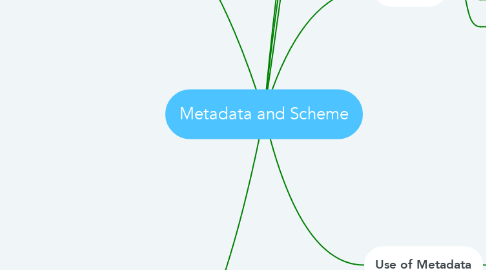
1. Type of Metadata
1.1. Administrative Metadata
1.1.1. Acquisition informaiton
1.1.2. Rights and reproduction tracking
1.1.3. Documentation of legal access requirements
1.1.4. Location information
1.1.5. Selection criteria for digitization
1.2. Descriptive Metadaata
1.2.1. Cataloging records
1.2.2. Finding aids
1.2.3. Differentiation between versions
1.2.4. Specialized indexes
1.2.5. Curatorial information
1.2.6. Hyperlinked relationships between resources
1.2.7. Annotations by creators and users
1.3. Preservation Metadata
1.3.1. Documentation of physical condition of rources
1.3.2. Documentation of actions taken to preserve physical and digital versions of resources, e.g., data refreshing and migration
1.3.3. Documentation of any changes occurring during digitization or preservation
1.4. Technical Metadata
1.4.1. Hardware and software documentation
1.4.2. Technical digitization information, e.g., formats, compression ratios, scaling routines
1.4.3. Tracking of system response times
1.4.4. Authentication and security data, e.g., encryption keys, passwords
1.5. Use Metadata
1.5.1. circulation records
1.5.2. physical and digital exhibition records
1.5.3. use and user tracking
1.5.4. content reuse and multi-versioning information
1.5.5. search logs
1.5.6. rights metadata
2. Design Principles
2.1. Simplicity
2.1.1. Simple and easy to understand
2.2. Modularity
2.2.1. Administrative metadata
2.2.2. Technical metadata
2.2.3. Descriptive metadata
2.2.4. Use metadata
2.2.5. Preservation metadata
2.3. Reusability
2.3.1. Reuse
2.3.2. Combine
2.4. Extensibility
2.4.1. To allow for extensions to metadata schema
2.5. Interoperability
2.5.1. To exchange and use information
2.5.2. Federated Repository
3. Design of Metadata Scheme
3.1. pre-design analysis
3.1.1. Requirement /needs analysis
3.1.1.1. Nature of specific information objects
3.1.2. Existing Metadata schemes / Standards
4. elements
4.1. title
4.2. author
4.3. subject
5. encoding rules
5.1. how content must be formulated
5.2. Representation rules for content
5.3. Allowable content values
5.3.1. controlled vocabulary
6. Schemes
6.1. MARC
6.1.1. Library
6.2. CDWA
6.2.1. Museum
6.3. DC
6.3.1. widely used
6.3.2. Defined by DCMI
6.3.3. Simple

